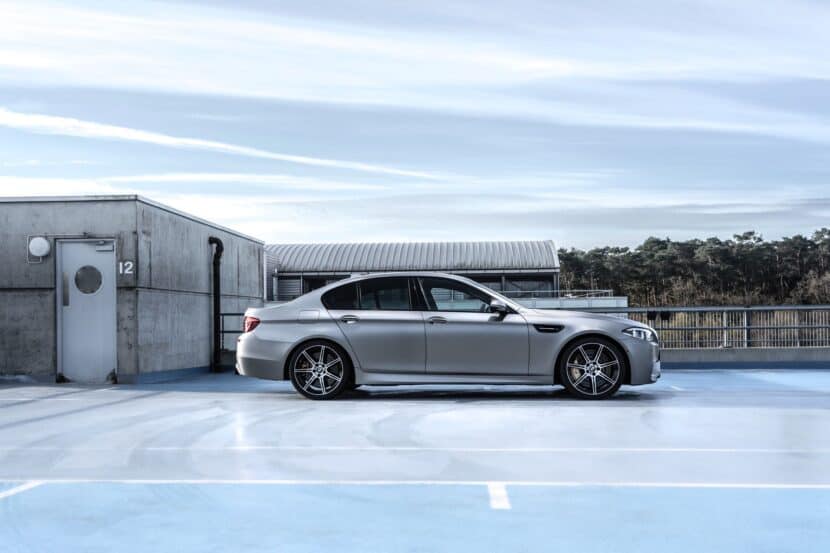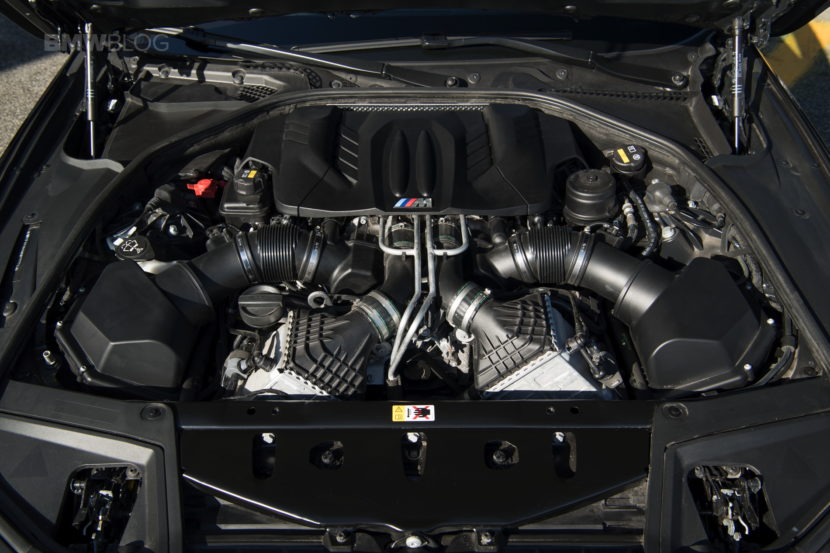When you think about the BMW M5, your mind might first jump to the exciting M5 Touring, which will be available later this year or early next year. Then you might recall the original M5 Touring—the E34 – a rear-wheel drive wagon wonder that offered a manual transmission, crisp S38 3.8-liter inline-six, and rear-wheel drive. Somewhere in between, you’ll find the F10 BMW M5. It may seem hard to believe, but the youngest F10 M5 sedans in the States are now nearing ten years old. Produced from 2011 until 2016 worldwide, it debuted as a 2012 model in the US. Globally, 19,533 examples of the super sedan rolled out of BMW Plant Dingolfing. For reference, BMW made 20,482 examples of the E39 M5.
So, it’s (kinda) rare. It’s fast, too. It isn’t hampered by an awful transmission like its predecessor, the E60. It even has hydraulic power steering, making it one of the last BMW models ever made with Servotronic. The best news? It’s not too late to scoop one up at a decent price.
Why You Should Definitely Buy an F10 M5

Perhaps the most obvious selling point and daunting ownership aspect of the F10 M5 is its twin-turbo V8 engine. The S63B44 TU under the hood makes 560 horsepower and 500 pound-feet of torque. Later models that came equipped with the Competition Package upped the ante to 575 horsepower, and a few special editions got a nice round 600 horsepower. As the F10 M5 only came in rear-wheel drive configuration, the car is ready and willing to step the rear end out with just a feather of the throttle in the correct situations.
But it gets better: the F10 M5 is also available with a manual transmission in North America. Only 577 were produced, 17 of which were pre-production vehicles, leaving 560 for public consumption. And it ain’t the anemic Getrag box that accompanies the V8-powered M3, either—it’s the notchier, slicker ZF six-speed box, similar to what you find in a new BMW today.
F10 BMW M5
Good
- Beautiful design
- Great sounding engine
- Still a fairly analog drive
Bad
- It's heavy
- Might be expensive to maintain
The best of the best examples get the Competition Package. This desirable addition added a quicker steering rack, 20-inch wheels, a sport exhaust, revised and generally stiffer suspension tuning, and the aforementioned horsepower bump to 575. 2,606 examples were produced for the North American market, while around 1900 made it to the rest of the world.
Current F10 M5 Pricing
Pricing for the F10 M5 currently falls between a new Mitsubishi Mirage ($16,695) and a new M3 ($76,000). That’s not bad for a car that debuted with an MSRP of around $92,000. The sweet spot is really the $25K—$35K mark—less if you’re not afraid to get your hands dirty and DIY deferred maintenance.
Manual transmission cars will cost more and hold value better, but it’s worth it. The same goes for cars equipped with the Competition Package. With numerous enhancements over the standard car, it goes a long way to making the F10 M5 more of a driver’s car. There are also a few special editions of the F10 M5 – like the 30 Jahre Edition and Pure Metal Silver Edition. They all come with Comp Package goodies and will also command premiums that you should see if it comes time to resell.
What’s the Catch?
While the vehicle’s performance capabilities are impressive, the F10 M5 is not without problems. The car is heavy, tipping the scales at around 4,350 pounds. That’s 300ish more than its predecessor and only 50 or so less than the outgoing F90 M5. It’s also just a big vehicle overall – it’s not a sports car, and you can’t really drive it like one. Luckily, plenty of power and good steering (and good transmission options) still make it feel special when behind the wheel. It’s also, generally, more comfortable to drive than both of those other M5s.
The F10 M5 is the complete BMW ownership experience. What that means is expensive parts and time-consuming jobs that can quickly run out of control. The car (engine, really) is notorious for faulty valve stem seals, which can be a $10K+ job if you’re not doing the work yourself. VANOS solenoids, spark plugs, ignition coils, a leaky PCV system, and fuel pumps are items that typically will need replacement – no way around it. Some rod bearing issues persist, too, though it isn’t something I’d consider to be a common issue.
The F10 M5 is Worth Checking Out
So, it’s big and heavy and expensive to keep running like new. But it feels great from behind the wheel and puts some serious power down. The technology is a good balance of new and old, too – so you won’t struggle to pair up your phone or have to deal with particularly clumsy iDrive controls.
As long as you don’t let the vehicle’s low cost of entry hoodwink you into believing it’s a “cheap” car, the F10 M5 is definitely worth considering. While it likely won’t ascend to legendary status like the E39 M5 and doesn’t have the zero-to-60 cred of the F90 M5, the F10 is a great car with its own high points. And, thankfully, its flaws have continued to keep prices low – so far. Get one before you can’t.








































































